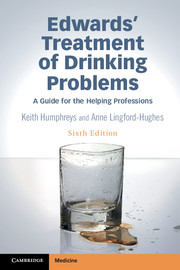Book contents
- Edwards’ Treatment of Drinking ProblemsA Guide for the Helping Professions
- Edwards’ Treatment of Drinking Problems
- Copyright page
- Dedication
- Contents
- Book part
- A note on the sixth edition
- Introduction
- Part I Background to understanding
- Chapter 1 Definitions of drinking problems
- Chapter 2 Alcohol as a drug
- Chapter 3 Causes of drinking problems
- Chapter 4 Social complications of drinking problems
- Chapter 5 Physical complications of excessive drinking
- Chapter 6 Drinking problems and psychiatric disorders
- Chapter 7 Alcohol and other drug problems
- Part II Treatment: Context and content
- Epilogue
- Index
- References
Chapter 2 - Alcohol as a drug
from Part I - Background to understanding
Published online by Cambridge University Press: 05 April 2016
- Edwards’ Treatment of Drinking ProblemsA Guide for the Helping Professions
- Edwards’ Treatment of Drinking Problems
- Copyright page
- Dedication
- Contents
- Book part
- A note on the sixth edition
- Introduction
- Part I Background to understanding
- Chapter 1 Definitions of drinking problems
- Chapter 2 Alcohol as a drug
- Chapter 3 Causes of drinking problems
- Chapter 4 Social complications of drinking problems
- Chapter 5 Physical complications of excessive drinking
- Chapter 6 Drinking problems and psychiatric disorders
- Chapter 7 Alcohol and other drug problems
- Part II Treatment: Context and content
- Epilogue
- Index
- References
- Type
- Chapter
- Information
- Edwards' Treatment of Drinking ProblemsA Guide for the Helping Professions, pp. 23 - 37Publisher: Cambridge University PressPrint publication year: 2016



